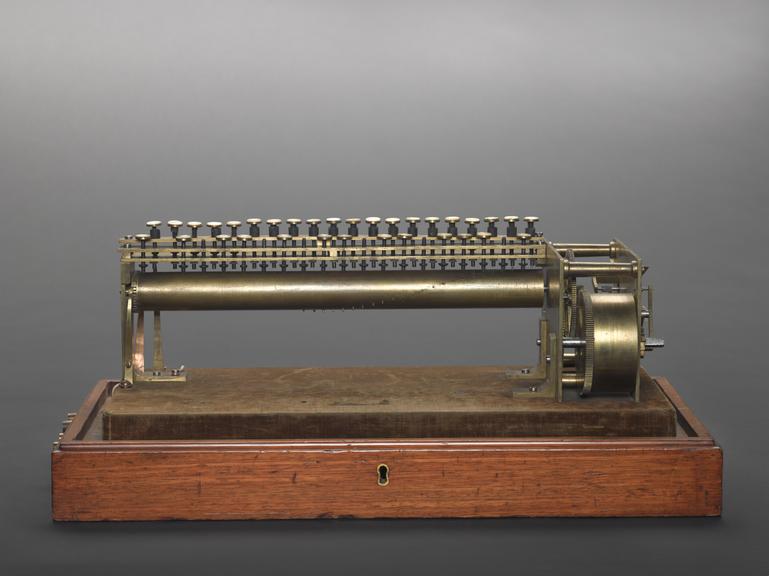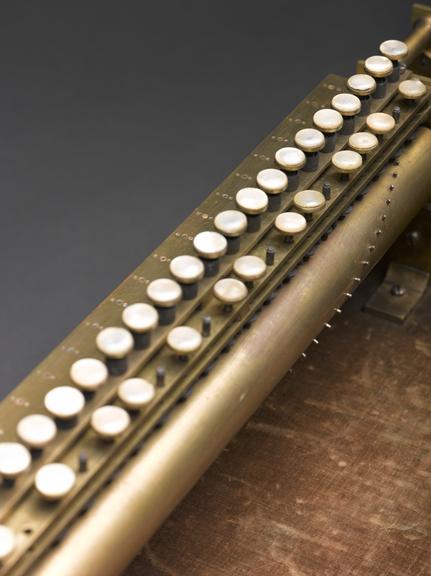

Keyboard for transmitting telegraphic messages, 1845-1851
- maker:
- John Watkins Brett








Keyboard for transmitting telegraphic messages, probably made by John Watkins Brett, London, England, 1845-1851.
This keyboard is believed to have been part of the printing telegraph used by John W Brett (1805-1863) to send the first telegraphic message under the ocean, from Dover to Cape Gris-Nez in 1851. It had 40 keys, but only 29 different symbols, as commoner ones were repeated. Brett acquired a UK patent for his 'improvements in electric telegraphy' based on the inventions of Royal House (1814-1895). The cable that carried the message was laid between Dover and Cap Gris Nez in 1851.
Details
- Category:
- Telecommunications
- Object Number:
- 1862-150
- Materials:
- wood (unidentified), metal (unknown), mother-of-pearl, steel (metal) and velvet
- Measurements:
-
overall: 200 mm x 510 mm x 260 mm, 6.44 kg
- type:
- telegraph peripheral
- credit:
- From John Watkins Brett




